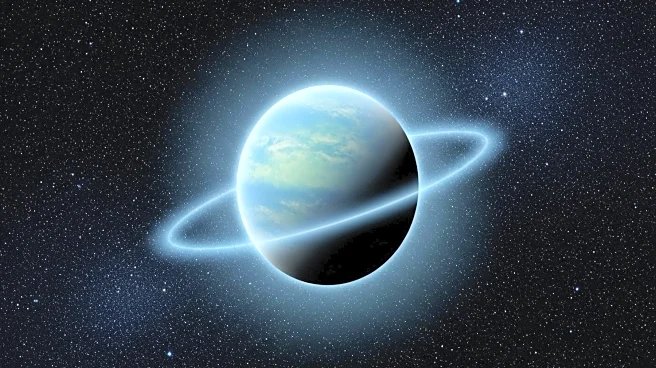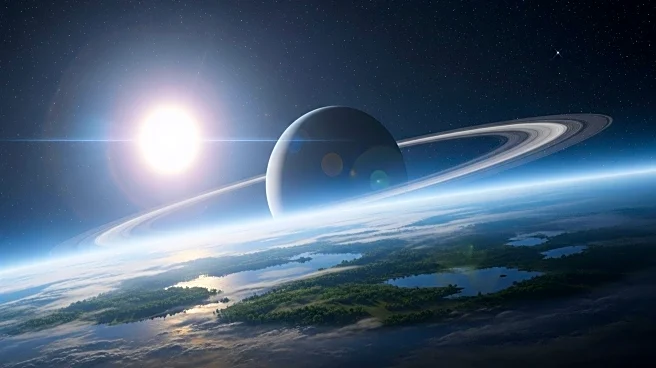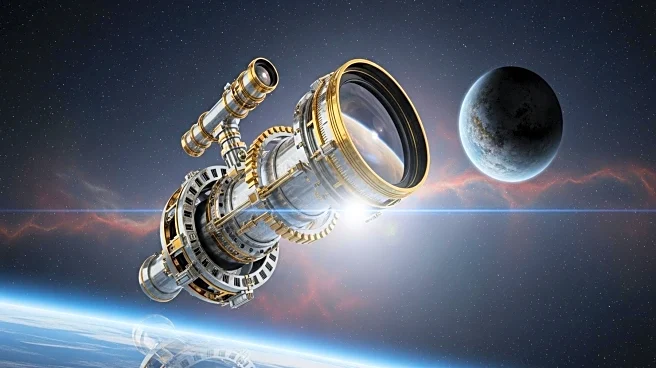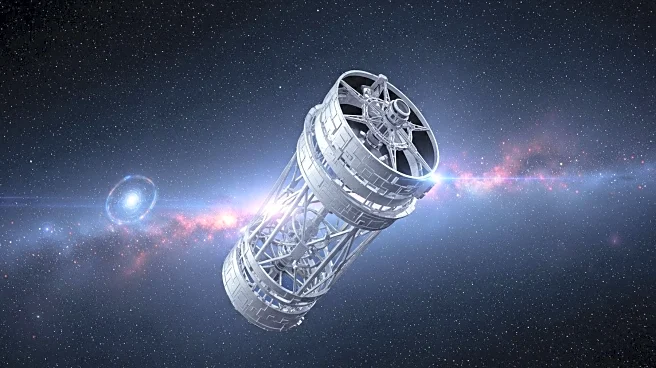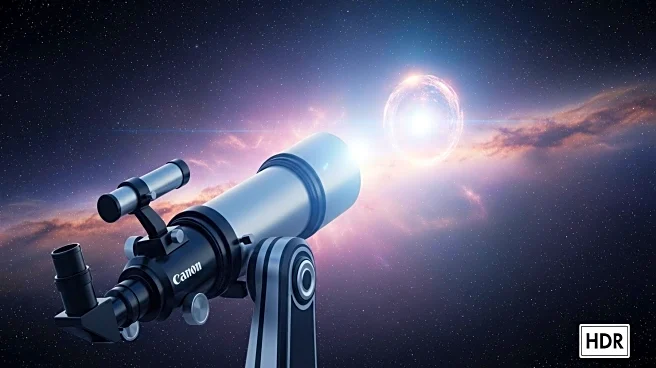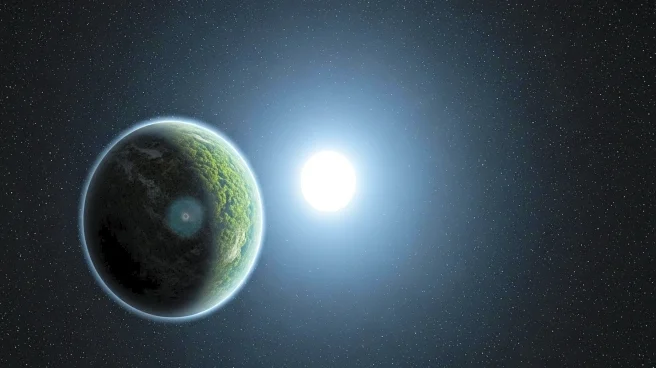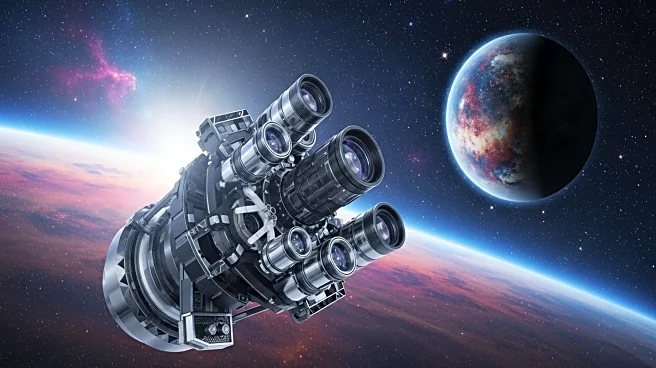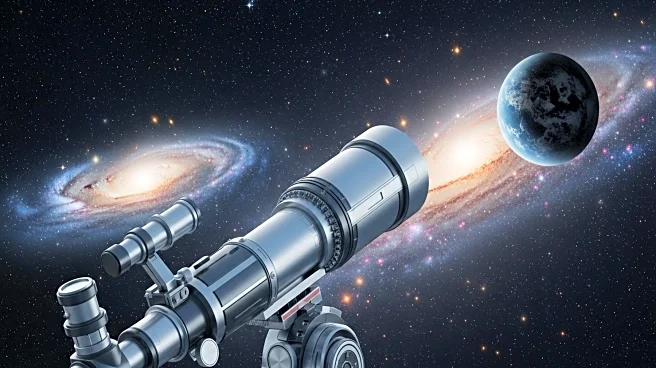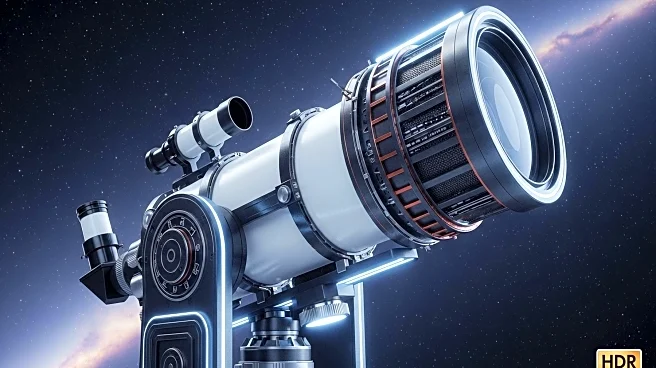What's Happening?
Astronomers have identified promising signs that the exoplanet TRAPPIST-1e, located 40 light years from Earth, may have an atmosphere capable of supporting life. Using the James Webb Space Telescope, researchers have detected potential indicators of a nitrogen-rich atmosphere, similar to Earth's. TRAPPIST-1e is situated in the 'Goldilocks zone' of its star, where conditions may allow for liquid water. This discovery marks a significant step in the search for habitable planets beyond our solar system.
Why It's Important?
The potential discovery of a life-supporting atmosphere on TRAPPIST-1e could have profound implications for the field of astrobiology and the search for extraterrestrial life. If confirmed, it would suggest that conditions conducive to life might be more common in the universe than previously thought. This finding could drive further investment and interest in space exploration and research, as scientists seek to understand the potential for life on other planets. The study of TRAPPIST-1e also enhances our understanding of planetary atmospheres and their role in supporting life.
What's Next?
Researchers plan to conduct additional observations of TRAPPIST-1e using the James Webb Space Telescope to confirm the presence of a nitrogen-rich atmosphere. These observations will help determine the planet's atmospheric composition and assess its potential to support life. The scientific community will closely monitor these developments, as they could provide critical insights into the conditions necessary for life beyond Earth. Continued exploration of TRAPPIST-1e and similar exoplanets will be a priority for astronomers in the coming years.
